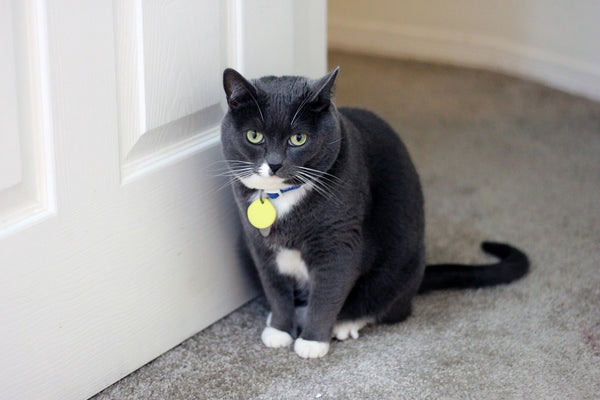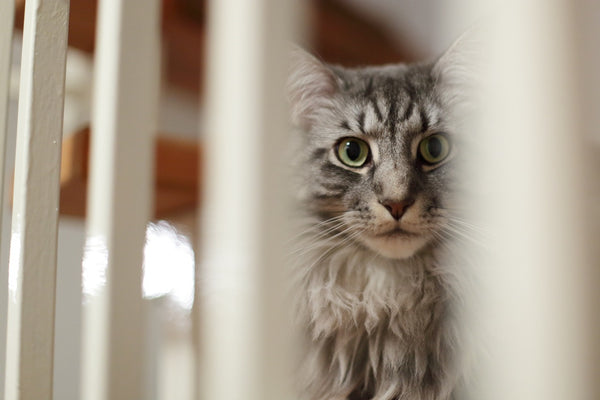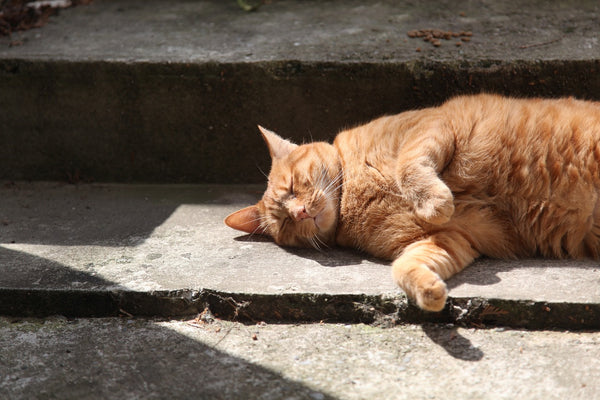Unlocking the Enigma of Indoor Cats: Why They Guard, Block, and Perch
Cats, those enchanting creatures, continually bewilder us with their captivating behaviors. For indoor cat aficionados, witnessing our feline friends blocking doorways, guarding stairs, or perching at the top can be a source of endless fascination. These behaviors might seem perplexing at first glance, but they hold intriguing insights into a cat's instincts and their unique personalities. In this article, we embark on a journey into the captivating world of indoor cat behavior, unveiling the mysteries behind their whimsical actions.

Why Do Cats Block Doorways?
Imagine a scenario: Your indoor cat occupies the threshold of a doorway, seemingly oblivious to your attempts to pass. What drives this common behavior, and what secrets does it conceal?
- The Call of Curiosity: Cats are born adventurers. Their boundless curiosity often propels them to block doorways, compelled by an irresistible urge to uncover the mysteries of the other side—an uncharted room, unfamiliar sounds, or enticing scents. When they stand guard, they are the gatekeepers of the unknown.
- Marking Territory and Seeking Protection: Doorways, invisible boundaries in a cat's realm, carry significance. When your cat obstructs these passages, it's a manifestation of their territorial instincts. By doing so, they assert dominance and protect their cherished domain, conveying a silent message: "This space is under my jurisdiction."
- The Art of Attention-Seeking: Cats are consummate attention-seekers. Blocking doorways can be a clever strategy to engage their human companions. Whether it's a playful gambol, an expression of affection-starved yearning, or a demand for recognition, their doorway antics are potent magnets for our attention.
- The Human-Cat Communication Dance: It's important to recognize that cats don't share our language, so they employ body language to convey their desires and emotions. Blocking doorways is part of their non-verbal communication, signaling their intent and seeking a response.

Why Do Cats Guard Stairs?
Now, picture your beloved feline companion standing guard at the foot of your staircase. What motivates this intriguing behavior, and what stories lie hidden beneath their vigilant posture?
- The Safety Perch: Staircases offer cats an advantageous vantage point for observation. When they guard stairs, they are instinctually maintaining vigilance over their surroundings, showcasing their unyielding need for security. Perched there, they are the watchmen of their domain.
- Social Chessboard: In households with multiple cats, guarding stairs becomes a key move in the complex chess match of feline social dynamics. By obstructing the path, one cat may assert dominance, monopolize access to resources like food or favored resting spots, or simply establish their place in the hierarchy.
- Playful Ploys and Interactive Intentions: Cats are renowned for their playful nature. On the stairs, they may engage in playful antics, even attempting to "trip" you as part of a spirited game. They view your movement on the stairs as an opportunity for shared interaction, inviting you to partake in their playful world.

Why Do Cats Sleep at the Top of the Stairs?
Now, envision your cat selecting the top of the stairs as their preferred sleeping location. What draws them to this elevated perch, and what do they gain from this high-altitude haven?
- The Safety Haven: Elevated spots provide a comforting sense of security for cats. By choosing the top of the stairs as their sleeping haven, they are instinctively placing themselves in a strategic position. From this vantage point, they can rest while keeping a vigilant eye on their surroundings, a testament to their innate need for security.
- Cozy Climate Control: Temperature regulation plays a role in your cat's choice of sleeping spots. The upper reaches of your home often tend to be warmer, as warm air naturally ascends. By sleeping at the top of the stairs, your cat ensures a cozy and snug resting spot, especially during chilly seasons.
- Social Slumber and Human Connection: If the top of the stairs witnesses frequent human traffic, your cat may choose this location for their nap. And by positioning themselves there, they seek proximity and interaction with their favorite humans. It's a way for them to remain a part of the household's daily rhythm.
Deciphering the whims of indoor cats not only deepens your bond but also enriches your shared living experience. While their behaviors may initially confound or amuse, they are, more often than not, reflections of their natural instincts and individual quirks. So, whether your cat plays gatekeeper, stair sentinel, or stairway sleeper, each action is a chapter in the captivating story of your feline companion's life. By embracing and understanding these behaviors, you unlock the doorway to a more rewarding and harmonious connection with your indoor cat.